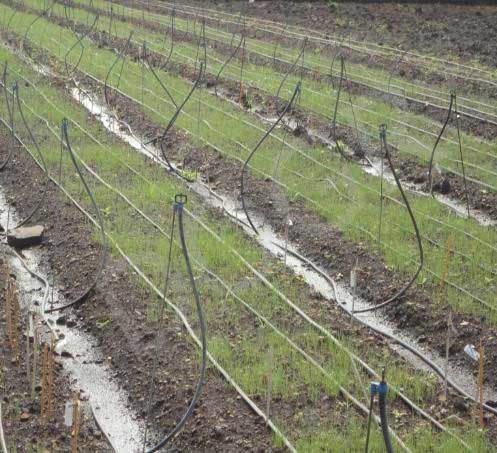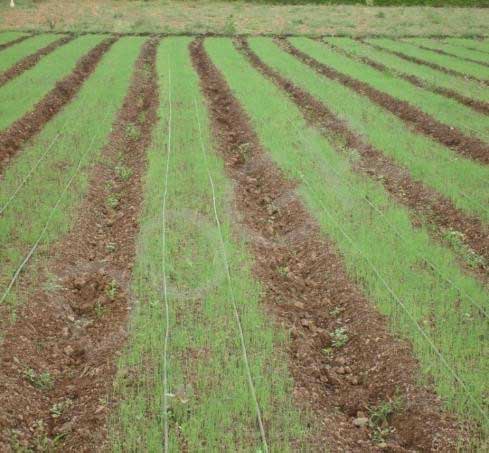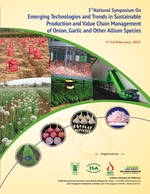Nursery raising


Proper nursery management and transplanting are important operations in the onion crop. About 0.05 hectare nursery bed area is enough for getting seedlings to transplant in one hectare. The field should be ploughed 5-6 times to break clods and well pulverized to hold water. The debris of previous crops, weeds and stones should be removed before bed preparation. Apply half ton of well decomposed farmyard manure (FYM) at the time of last ploughing in 0.05 ha and mix well with soil. For raising nursery, raised bed of 10-15 cm height, 1.0 - 1.2 m width and length as per convenience may be prepared. The distance between beds should be at least 30 cm, so that water movements are uniform and drainage of excess water is possible. Raised bed is recommended for nursery because in the case of flat bed, water moves from one end to the other and there is a possibility of washing away of seeds. Drainage of excess water is also a major problem with the flat bed method of raising seedlings. Application of pre-emergence herbicide pendimethalin @ 0.2% is recommended to control weeds in nursery. About 5-7 kg seeds are required to raise seedlings for one hectare. Before sowing, seeds should be treated with thiram @ 2 g/kg of seed to avoid damage from damping off disease. Application of Trichoderma viride @ 1,250 g / ha is also recommended to manage damping off and raise healthy seedlings. Seeds should be sown in lines at 50 mm to 75 mm apart to facilitate the removal of seedlings for transplanting, quick weeding, spray of pesticides etc.
After sowing, the seeds should be covered with fine powdered farmyard manure or compost followed by light watering. Application of water through drip or micro sprinkler irrigation system helps in saving irrigation water (Fig. 2). Foliar spray of benomyl @ 0.2% is recommended to control soil borne diseases in the nursery. When the severity of thrips infestation is high, foliar application of Fipronil or profenopos @ 0.1% is recommended. Seedlings are available for transplanting in 35-40 days after sowing (DAS) for Kharif and 45-50 DAS for late Kharif and Rabi seasons.















